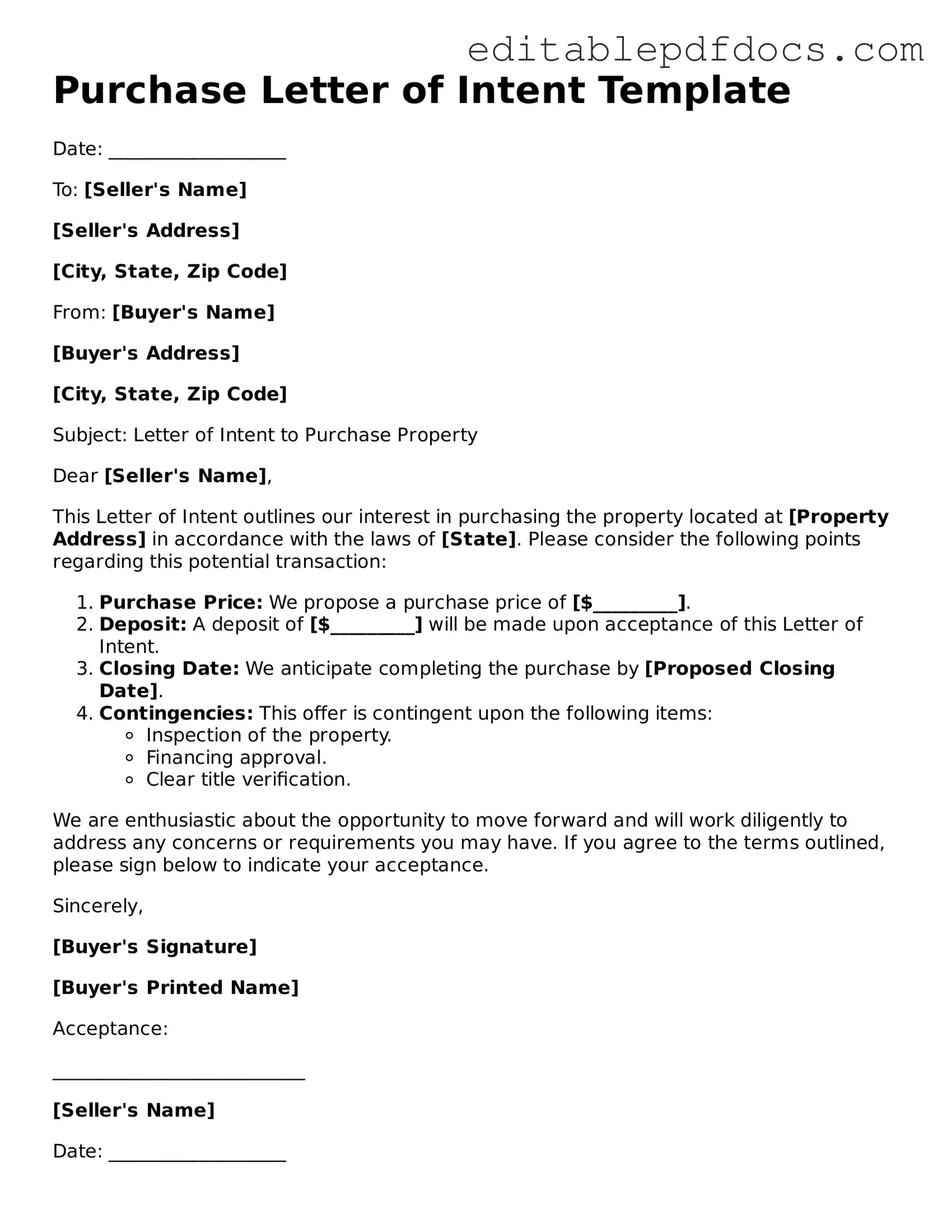When filling out a Purchase Letter of Intent (LOI), individuals often make several common mistakes that can lead to confusion or complications later in the process. One frequent error is failing to clearly define the terms of the agreement. Without precise language, misunderstandings may arise regarding the intentions of the parties involved.
Another mistake is neglecting to include essential details about the property or asset being purchased. Omitting information such as the address, legal description, or specific terms can create ambiguity. This lack of clarity might lead to disputes or delays in the transaction.
Many people also overlook the importance of specifying a timeline for the transaction. A well-defined timeline helps ensure that both parties have a mutual understanding of when key milestones should be achieved. Without this, the process can become prolonged and frustrating.
In addition, some individuals fail to consider the inclusion of contingencies in the LOI. Contingencies serve as protective measures, allowing the buyer to back out of the agreement under certain conditions. Not including these can expose the buyer to unnecessary risks.
Another common oversight is not addressing the confidentiality of the negotiations. Parties may wish to keep the details of the transaction private. If confidentiality is not mentioned, sensitive information could be disclosed, potentially harming the interests of those involved.
People sometimes also neglect to consult with legal or financial advisors before submitting the LOI. Professional guidance can provide valuable insights and help avoid pitfalls. Skipping this step may lead to unintentional mistakes that could have been easily avoided.
Lastly, failing to review the document thoroughly before signing is a significant mistake. Errors in the LOI can have serious implications. Taking the time to carefully read through the entire document ensures that all parties are in agreement and that the terms are understood.
